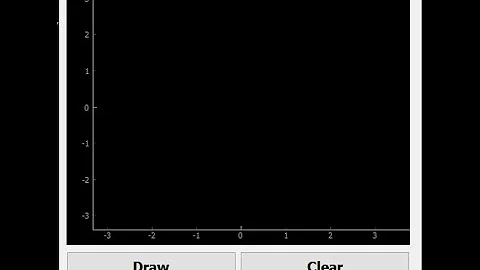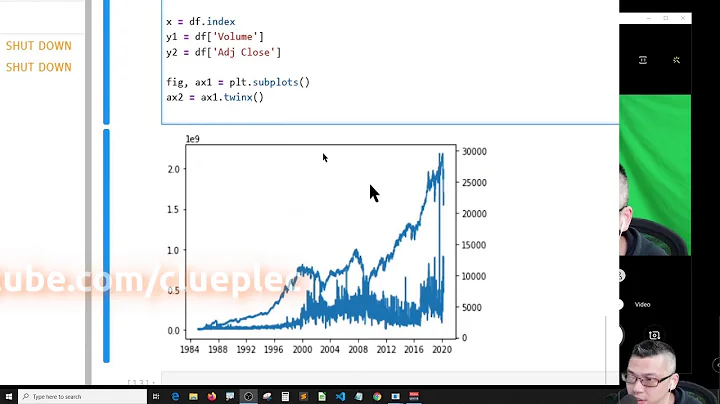How to plot two real-time data in one single plot in PyQtGraph?
While pyqtgraph is a great package from a functionality perspective, unfortunately the documentation is lacking, and you really just have to dig in to the code and start to understand the structure of the objects.
When you call:
p1 = win.addPlot()
This returns a reference to a PlotItem, at which point you can now add multiple PlotDataItems to this p1 object (see semi-useful structure diagram here : http://www.pyqtgraph.org/documentation/plotting.html#organization-of-plotting-classes )
So when you call:
curve1 = p1.plot()
This adds PlotDataItem #1, ... you now need to call it again to get a second reference to use:
curve2 = p1.plot()
This becomes PlotDataItem #2, which you can then use for the 2nd setData method in your plot() method to call during update(). Which would look like:
def plot():
#Blue Dots
curve1.setData(dataBlue, pen=None, symbol='o', symbolPen=None, symbolSize=4, symbolBrush=('b'))
#Red Dots
curve2.setData(dataRed, pen=None, symbol='o', symbolPen=None, symbolSize=4, symbolBrush=('r'))
Related videos on Youtube
Hugo Oliveira
Updated on June 04, 2022Comments
-
Hugo Oliveira about 2 years
I am willing to get 2 random data and plot it in the same Widget using PyQtGraph in a real-time way. I want them to show up as Red and Blue dots. However, after a hard time, my script does not work.
I would like to know what can I do in order to get both data in the same plot.
I know it is a silly question. I am a beginner in Python and coding.
Here is my code:
#-*- coding: utf-8 -*- import random import time from collections import deque import pyqtgraph as pg from pyqtgraph.Qt import QtCore, QtGui import numpy as np import os import spidev win = pg.GraphicsWindow() win.setWindowTitle('DOTS') p1 = win.addPlot() p1.setRange(yRange=[0,25]) p1.setRange(xRange=[0,25]) curve1 = p1.plot() nsamples=300 #Number of lines for the data dataRed= np.zeros((nsamples,2),float) #Matrix for the Red dots dataBlue=np.zeros((nsamples,2),float) #Matrix for the Blue dots def getData(): global dataRed, dataBlue t0= random.uniform(1.6,20.5) #Acquiring Data d0= random.uniform(1.6,20.5) #Acquiring Data vec=(t0, d0) dataRed[:-1] = dataRed[1:] dataRed[-1]=np.array(vec) t0= random.uniform(1.6,20.5) #Acquiring Data d0= random.uniform(1.6,20.5) #Acquiring Data vec=(t0, d0) dataBlue[:-1] = dataBlue[1:] dataBlue[-1]=np.array(vec) def plot(): #Blue Dots curve1.setData(dataBlue, pen=None, symbol='o', symbolPen=None, symbolSize=4, symbolBrush=('b')) #Red Dots curve1.setData(dataRed, pen=None, symbol='o', symbolPen=None, symbolSize=4, symbolBrush=('r')) def update(): getData() plot() timer = pg.QtCore.QTimer() timer.timeout.connect(update) timer.start(50) ## Start Qt event loop unless running in interactive mode or using pyside. if __name__ == '__main__': import sys if (sys.flags.interactive != 1) or not hasattr(QtCore, 'PYQT_VERSION'): QtGui.QApplication.instance().exec_()# -*- coding: utf-8 -*-I would really appreciate your help.
-
Maarten Fabré over 7 years
dataRed[:-1] = dataRed[1:] dataRed[-1]=np.array(vec)isn't this shifting the data 1 place to the back and then replacing the last item instead of the first?
-
-
Hugo Oliveira over 7 yearsWOW! Thank you very much. I got my problem solved. Thank you very much for all the explanation!






